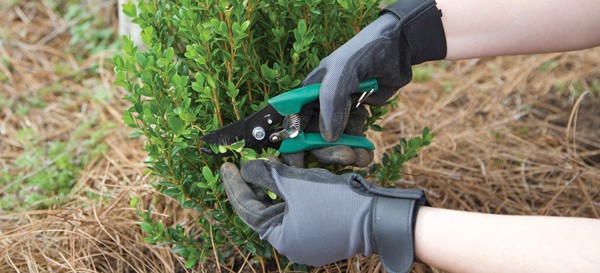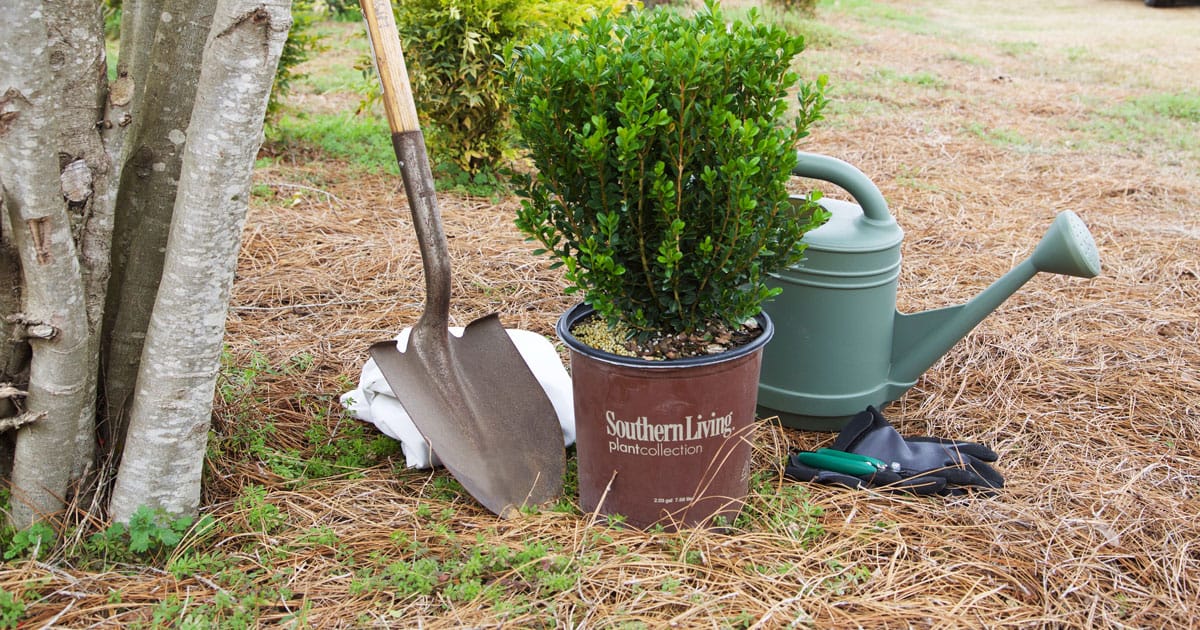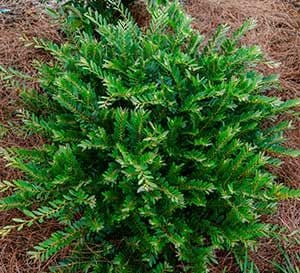By Kimberly Toscano
Boxwood is beloved for its versatility in the landscape. Varieties like our Baby Gem™ Boxwood offer a strong form and bright evergreen foliage that provide structure and color to the garden throughout the year. Whether you prefer your boxwood clipped and formal, or rustic, these care tips will help you keep boxwood looking great all year long.
Plant Your Boxwood in the Right Location
Siting boxwood in the proper location goes a long way toward maintaining healthy plants. Think about the conditions in your garden throughout the year. Are your summers hot and dry? Are winters windy or calm? Boxwood performs best in full sun to part shade conditions. In hot climates, plants benefit from afternoon shade. Boxwood is susceptible to damage from dry winter winds; plant in a location where it will be protected.

Provide Adequate Drainage
Boxwood plants tolerate a variety of soils, whether acidic or alkaline, rich or infertile. The one essential soil requirement for a healthy boxwood is good drainage – these plants do not tolerate wet feet! Amend soils with organic matter or plant on a berm to improve drainage.
Avoid wet areas, such as alongside downspouts or low-lying portions of the landscape. Boxwood are also commonly planted in containers. Be sure to select a container with excellent drainage to avoid root diseases.

Protect Boxwood Roots
Boxwood plants have a shallow root system that can easily dry out. The first step to maintaining a healthy root system is planting at the proper depth. Set plants such that the root ball sits just an 1/8 inch above the soil surface. This will allow plants to settle properly without becoming too deep.
Provide a two- to three-inch layer of mulch to keep roots cool and conserve soil moisture. Extend the layer of mulch at least one foot beyond the canopy of the plant. In fall and spring, rake away any fallen leaf material to control disease organisms and replenish mulch as needed to maintain good cover.

Prune Boxwood by Thinning
Throw away those shears! Today’s diverse selection of boxwood varieties like Baby Gem™ offer compact growth and dense branching without the need for heavy shearing. These new selections are healthier than maintaining rounded forms through shearing – a practice that can encourage disease by shading plant interiors, weakening branches, and reducing airflow. Instead of shearing, thinning is the recommended way to prune both compact and larger boxwood varieties.
Pay attention to damaged plant material when pruning. Remove broken, dying, or diseased branches as soon as they are noticed. This will assist with reducing disease organisms. Maintain good light penetration to the interior of the shrub by removing some of the oldest branches each year. Be sure to remove any foliage and debris that has collected among the boxwood branches.

Winter Protection for Boxwood
Boxwood foliage can become yellow-orange to reddish brown in winter from drying winds, frost, and intense sun – a problem called bronzing. Improved varieties like Baby Gem™ Boxwood hold color well in winter, but some protection can go a long way to avoid bronzing. Protection from winter winds is key to limiting bronzing. If the planting site does not offer protection, burlap wraps or windbreaks may be used to protect foliage.
Also, water plants prior to freezing temperatures to reduce bronzing. Keep roots insulated and conserve soil moisture by maintaining a three-inch mulch layer throughout fall and winter.

Water Boxwood Wisely
Overwatering is a leading cause of root diseases, while underwatering can promote stress, which makes plants more susceptible to certain pests. What is a gardener to do? Water plants slowly and deeply only when needed.
In the first year, newly planted boxwood will require regular irrigation – weekly or more during hot, dry weather. Second year plants are still developing a healthy root system and will continue to require water if rainfall is inadequate. Once established, boxwood only require supplemental irrigation during dry conditions.

Fertilize Boxwood as Needed
Every soil is different, and therefore so are a garden’s fertilization needs. Conduct a soil test to take the guesswork out of fertilizing. Proper fertilization encourages healthy growth and can reduce pest problems. Boxwood respond well to spring applications of nitrogen or a balanced fertilizer where phosphorous and potassium are deficient.
Remember, boxwood have wide, shallow root systems and can be damaged by over-fertilization. Apply fertilizer throughout the root zone, extending beyond the crown of the plant. Keep fertilizer from coming into direct contact with foliage, trunks, and roots.

Pin it for later!










